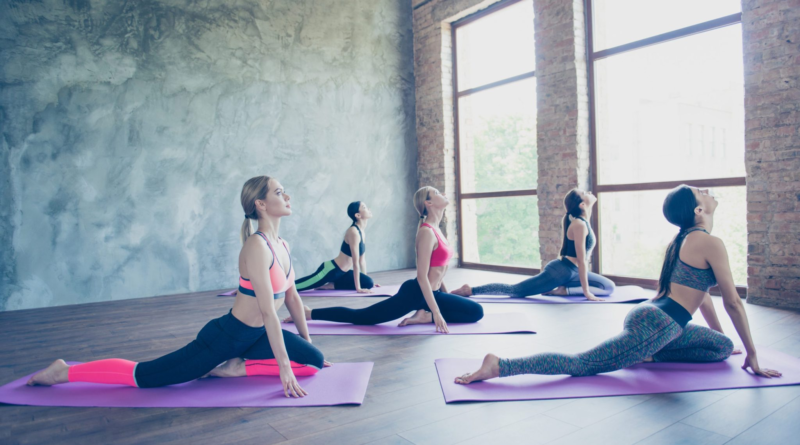The wealthy are dropping up to $10,000 a month on social wellness clubs to relax and reverse age with their peers
Stretching from Flatiron to Greenwich Village is a 10-block radius with three pockets of refuge for high-powered urbanites to counteract the toll of NYC’s rat race. They could escape into a red light bed, take a QiGong class, or enjoy a Himalayan salt sauna alongside their peers.
These are members-only social wellness clubs, varying in thousand-dollar price points and offerings but promising the same thing: a curated, convenient experience integrating health and community with the help of practitioners and luxury amenities.
For a monthly $355 starting price, members at THE WELL can come in for an alignment yoga class before grabbing an organic buffalo chicken bowl for lunch, then head downstairs to dip into the cold plunge in its longevity suite, sit in the meditation dome, and visit the acupuncturist. The peach and white aesthetic looks as soothing as the modern medicine-meets-ancient healing experience sounds, with softly curved walls, plants chosen to heal and purify, and a custom made scent of bergamot, grapefruit, and frankincense.
“It was designed to be your one-stop shop for wellness,” Kane Sarhan, co-founder and CCO of The WELL, tells Fortune. “New Yorkers have big lives, big jobs. They’re Type A go-getters. But the one thing that’s not wellness is New York City sidewalks or subways. It was about making it easy and convenient for someone who wants health and wellness at the center.”

Courtesy of The Well
It first opened its 13,000-square-feet space in September 2019. Two months later, Remedy Place opened in West Hollywood, welcoming celebrity clientele like Rita Ora and Kasey Musgraves to a sleek, masculine, gray space “designed to heal,” founder Jonathan Leary tells Fortune. The goal: offering new ways to socialize with clinical backed self-care, like social acupuncture or an IV drip with a movie, for $300 to $2,250 a month depending on package and location.
It was the end of a decade during which SoulCycle and green juices became a status symbol in a $4.5 trillion global wellness economy. Private social clubs oriented around health, like Grace Belgarvia and Mortimer House, had popped up in London, while some general members-only clubs started including preventative offerings like brain training programs. Dedicated members-only spaces for wellness in the U.S. was a natural evolution. While the pandemic initially threw a wrench in the concept, it ended up reinforcing it as people reprioritized community and well-being.
Social wellness clubs became a booming niche in the post-pandemic private club gold rush as the world woke up from a health scare to a loneliness epidemic. THE WELL, which also has locations in Costa Rica, Mexico, and Connecticut, is expanding to Geneva and Miami (which includes a wellness-oriented residence) with more expansion plans in the works. Remedy Place expanded to NYC in 2022 and plans to launch 16 clubs across the country. And Continuum Club, which merges a “white-glove experience” with AI technology to help members achieve their physical goals, just opened in May for $10,000 a month.
There are eight private wellness club brands in NYC and five in LA (although not all are designed to foster social interaction and community), according to Private Club Marketing, which helps bring private clubs to life. “Wellness has now become less of an I’m interested in wellness to a lifestyle choice,” CEO Zack Bates tells Fortune. Fueling the shift are millennials, who “have really put their health and wellness at the forefront and have the financial means to participate in these spaces to make this a success.”
Health signals wealth

Courtesy of Remedy Place
The first members-only social clubs emerged in 18th-century London for affluent men to socialize and network with like-minded peers; in the 20th century, barriers broke down to allow for women and other minorities. Today’s version looks like a designed experience catering to the young, wealthy, and connected in bright urban cities at high price tags—think Soho House, which emerged in the ‘90s, or the newer Casa Cipriani or Zero Bond.
Exclusivity has always been part of the appeal, explains Silvia Bellezza, associate professor of business in marketing at Columbia University. “The smaller the ‘in’ group and the harder it is to get access, the higher the signaling power of that belongingness,” she tells Fortune.
The wealthy used to signal this with physical items like a high-end bag or car. But as more consumers could access these goods, counterfeiters became more skilled, and the world fell in love with quiet luxury, they shifted to intangible assets—like health and wellness, which she says aligns with the progressive dematerialization of status symbols.
They also changed how they spend and signal their time. Laziness used to symbolize wealth because the rich could afford not to work. Now that workaholism signifies status and leisure has become more active, she says, it makes sense that social wellness clubs have emerged. “Going to a club tied to health and wellness speaks to this idea of more active leisure and a more productive type of leisure time,” she says. “You’re not working, but you’re also doing something productive; you’re working on your body or your look or trying to preserve your age forever.”
But the wellness industry has received backlash for being exclusionary and expensive—two things social clubs can be seen as as well.
When THE WELL reopened after the pandemic, the founders felt its members-only model wasn’t the right fit for helping people prioritize wellness. So they maintained dedicated programming for members, like unlimited infrared experiences and discounts, while offering a la carte services—which Sarhan says sometimes converts customers into members.
While members typically range from age 25 to 75, he says they’re typically 30-somethings with an annual $250,000-plus income. But “someone who is younger or doesn’t have the income to afford a membership can still sort of have a gateway into us,” he says.
A new need for prevention and longevity
During his 20-year health and wellness career, Jeff Halevy detected a trifold problem. One: Wellness is a nebulous term that might mean yoga and a smoothie for one person, but a gluten-free diet and meditation for another. “None of these are necessarily wrong, but understanding which actually moves the needle in the right direction, from an outcome-based perspective, does separate the wheat from the chaff,” he says.
Two: Wellness solutions vary in efficacy and quality. And three: People not only need to understand how to navigate these solutions, but how to assemble them “into a game plan—a fluid mosaic that adapts and evolves with their changing needs.” Wearables like the Oura ring have begun to do this, but he says parsing the info is a different story: “People don’t need data and dashboards—they need direction.”
That’s where Continuum Club comes in with precision wellness, offering integrated data sets from sleep to exercise in an AI-built personalized wellness regimen for NYC one percenters. The location: A 25,000-square-foot Romanesque Revival building that feels contemporary but warm with earthy tones and brick walls housing “human performance specialists,” hyperbaric chambers, a state-of-the-art gym, and a float tank.

Courtesy of The Continuum Club
Its science-backed and technological approach exemplifies the year’s key wellness trends, per McKinsey’s Wellness 2024 report: biomonitoring, AI-based personalized wellness recs, products based on scientific efficacy and clinical effectiveness, and doctor recommendations. How social wellness clubs can deliver offerings to members that “inspire confidence in the efficacy and scientific backing” is important, says Anna Pione, one of the report’s authors.
Remedy Place designed its offerings “out of firsthand clinical evidence,” like blood work tests to create what Leary says is “the instruction manual for your body” and a hyperbaric oxygen chamber to accelerate the body’s biochemical healing process to reverse aging effects.
After all, we’re in our healthy aging era, obsessed with optimizing our wellness routines and embarking on Bryan Johnson-like quests to age backwards. More than 60% of consumers said it was extremely or very important to purchase longevity products, McKinsey found. It’s no coincidence that this increased interest coincides with the pandemic, which Pione—and everyone else Fortune spoke with—says made us more conscious of our mortality and managing our health.
“These are things that are all preventative, and there’s so much data and technology that’s available today to help remedy this,” Bates says.
Community is wellness
One key to living longer and happier, per a Harvard study: Embracing community, which the pandemic also pushed forth. Building that for the like-minded has fueled the most successful private clubs, Bates says, whereas those that fail built a beautiful space without soul. Wellness has often driven individuals to them, he adds.
“This desire for community is quite interlinked with wellness, so it makes sense that an offering bringing both wellness and community would resonate,” Pione says. It’s exactly why Halevy says he created Continuum as a social club. But he’s keeping it small as part of the club’s commitment to maintaining a personalized and intimate experience; accepting 100 members and expanding to 250 next year with no plans to exceed that limit.
Leary is deliberately trying to change the narrative around how we socialize with what he calls ‘‘social substitutions” replacing typical social settings with self-care experiences. “This can be anything from a new way to have a date, an alternative for happy hour, where you have a meeting, etc,” he says, adding that members crave meaningful experiences and connections that prioritize holistic well-being over traditional indulgences like alcohol and food.
There’s also the convenience factor. Halevy says Continuum Club removes “the time and energy burden” for those juggling work, family, and social commitments. This feels especially palpable in big cities like New York, which Sarhan says “chews you up and spits you out.” People are often running around from one place to another, taking a yoga class here and seeing an acupuncturist there, he explains.
They need to get more done in less time, he adds. “Time is our most precious commodity.”




